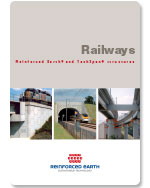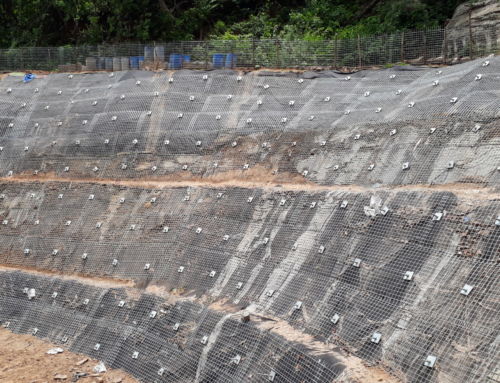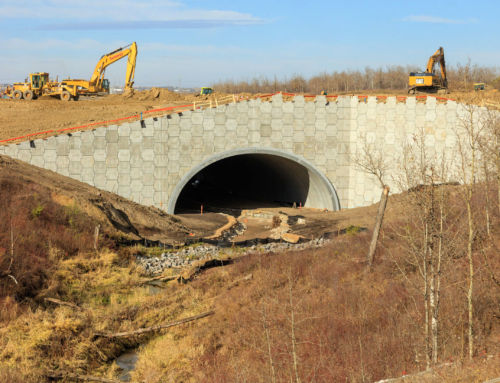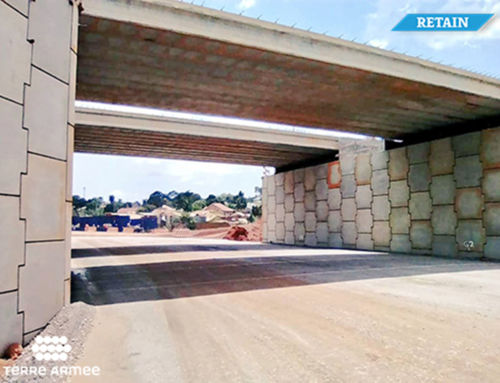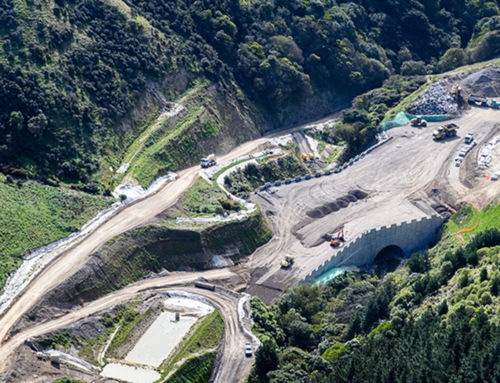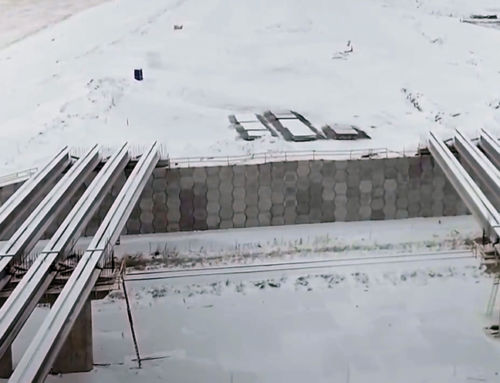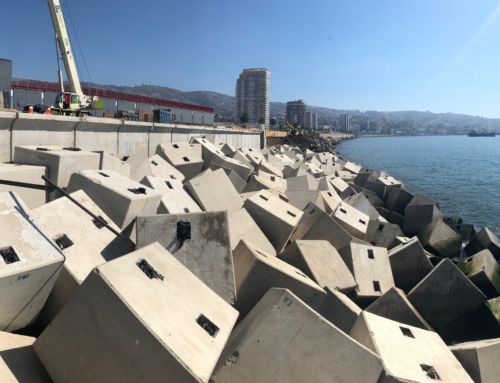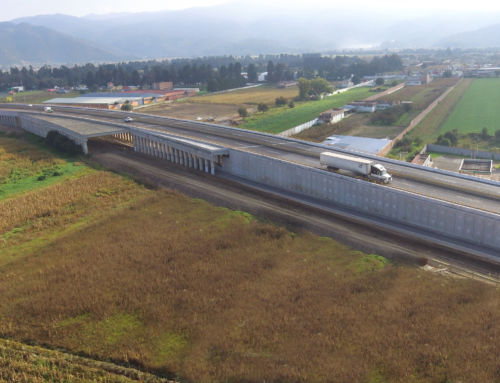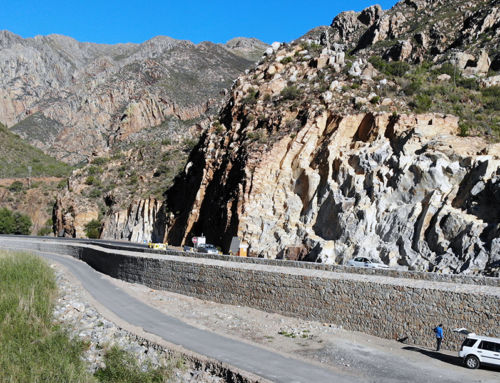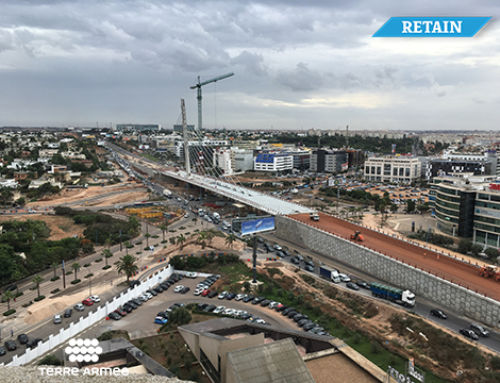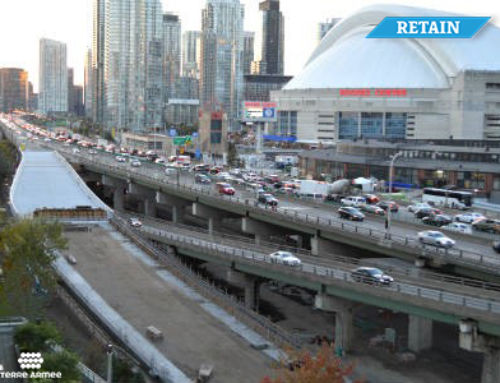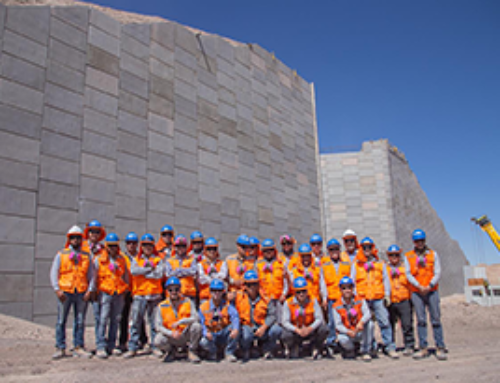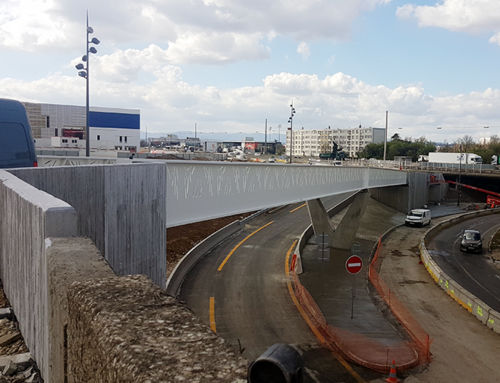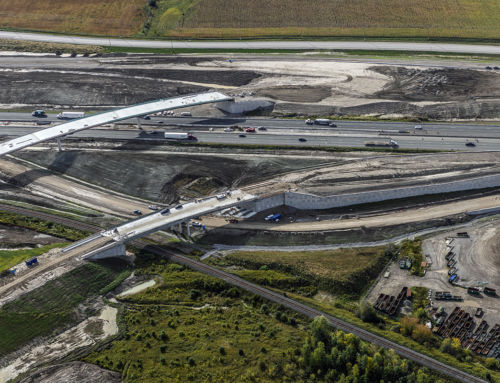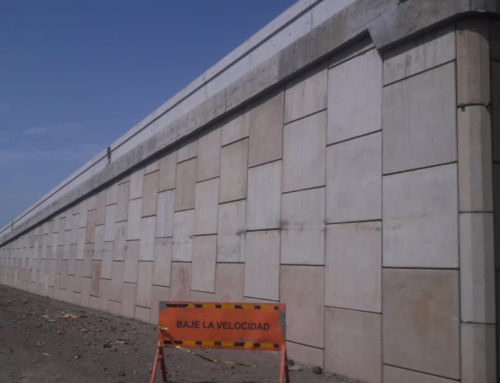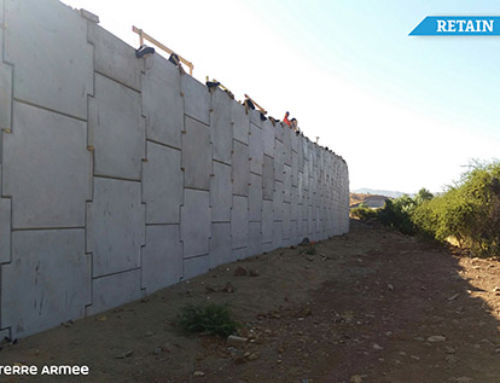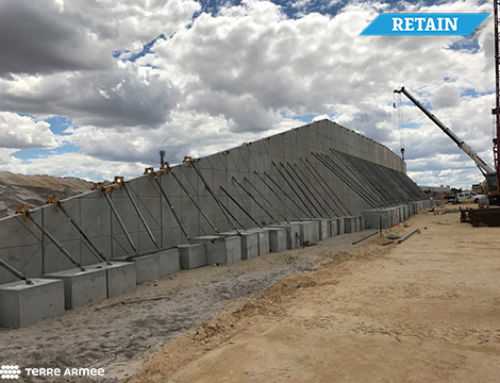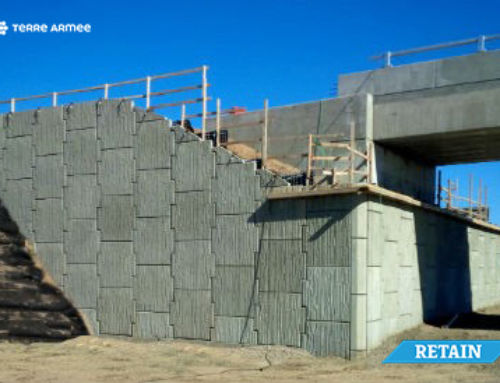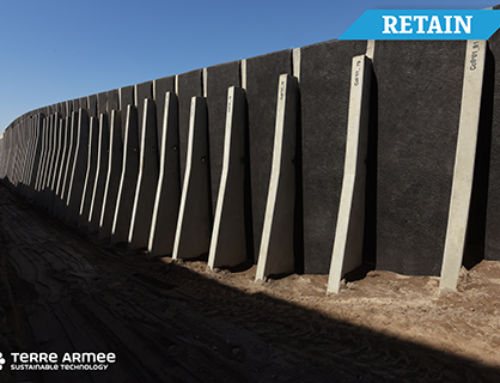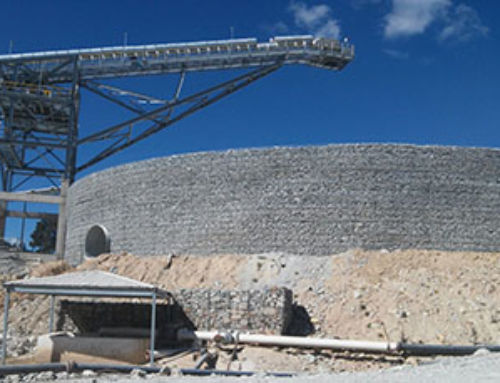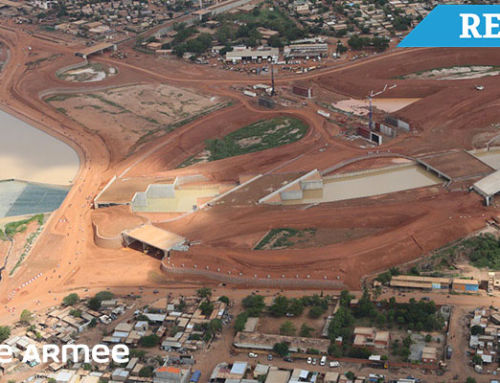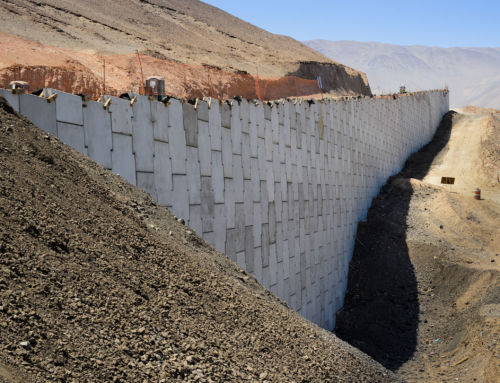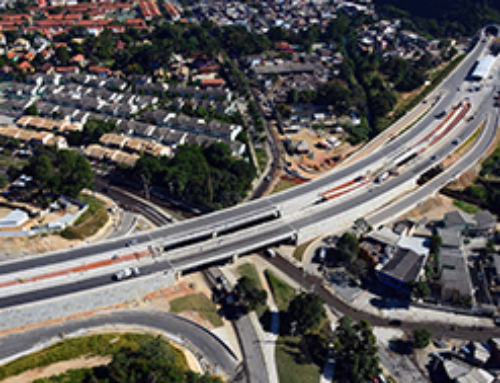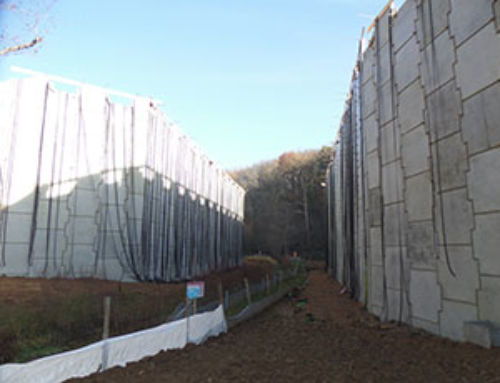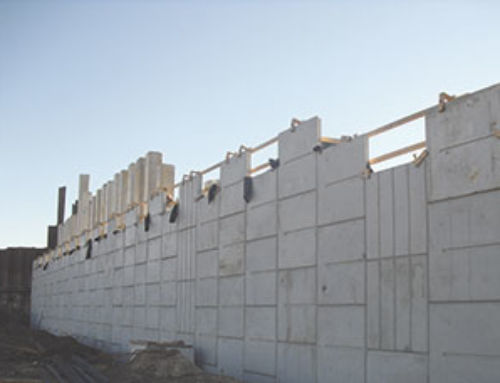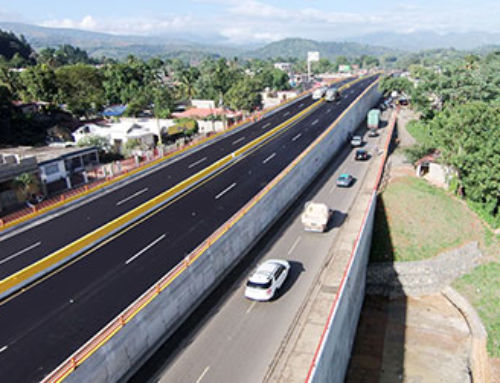The construction of Reinforced Earth® walls for the South-Europe-Atlantique (SEA) high-speed line (LGV) linking Tours to Bordeaux was completed in September 2014.
Eleven structures totalling 20 walls were built, mainly to support the railway tracks on both sides of flyovers.
The highest structure is 12.70 m high.
For two of these structures, the commercial speed of trains on the track is 320 km/hr.
For research and development purposes, a wall which support a track which will be trafficked with speeds up to 352 km/h (at the time of speed trials before the commercial opening of the line) was instrucmented in collaboration with IFSTTAR (the French institute of science and technology for transport, spatial planning, development and networks), to enable a better understanding of the diffusion of dynamic stresses within the structure during the passage of trains. These measures are planned for the second half of 2016.
In addition to the reduction of costs and faster operation, this type of construction offers a proven compatibility with the dynamic stresses introduced by the passage of trains.
Opening of the tracks is planned for 2017.
More about:
Our Railways applications
What is the LGV SEA?
As the initial construction of a high-speed line on France's distributor model, the Tours-Bordeaux LGV SEA project is part of a land-use planning scheme, which is mainly the result of decisions made by the last Grenelle Environment Forum.
The Tours-Bordeaux LGV SEA will include 340 km of new lines, of which 302 km will be a high-speed line and around forty km will be connected to the existing line. It crosses: 3 regions (Centre, Poitou-Charentes and Aquitaine), 6 departments (Indre-et-Loire, Vienne, Deux-Sèvres, Charente, Charente-Maritime and Gironde) and 113 municipalities.
Among the expected economic benefits are:
- The release of the operation from the current line to develop TER and freight.
- The reinforcement of the European rail network: the Tours-Bordeaux LGV SEA is part of the entire Sud Europe-Atlantique (South Europe-Atlantic) (SEA) rail, which will continue to Toulouse and Spain, linking the regions of northern and eastern Europe, the south-west of France and the Iberian peninsula.
- New economic developments for regions passed through and in particular the development of the greater south-west region.

